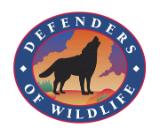Mudford Farm: Restoring Habitat for Wildlife and the Chesapeake Bay by Chris Pupke
Chesapeake Wildlife Heritage has a mission – to bring back habitat for wildlife and clean up the Chesapeake Bay in the process. Our nation’s largest estuary, the Chesapeake Bay spans 64,000 square miles of stunning aquatic, marsh, and upland habitats. Over 3,500 migratory and resident wildlife species depend on the estuary for food, cover, and nesting sites alongside a growing population of over 15 million people. Not surprisingly humans are having a big impact on the bay and despite concerted efforts by local, state, and regional groups, the bay’s health continues to decline. In short, we need to do more – much more.
Chesapeake Wildlife Heritage, a land trust and habitat restoration group, is addressing this challenge in a big way. They’ve created a comprehensive program that combines habitat protection, restoration, landowner education and technical services to protect and restore the most important wildlife habitats in coastal Maryland.
Most recently, through a joint venture with the Biophilia Foundation, Chesapeake Wildlife Heritage has purchased Mudford Farm - a 275-acre gem of marsh, woodland and agricultural habitats at the headwaters of the Chester River on Maryland’s Eastern Shore. They plan to restore 30 acres of wetlands, create 30 acres of warm-season grass meadows and plant 10 acres of trees on the property to restore essential wildlife habitats. The newly restored farm will be sold to a conservation buyer and protected with a conservation easement designed not only to protect the property’s open space but also to maintain essential wildlife habitat in perpetuity. Ninety acres of land possessing the most productive soils will be used for future farming activities.
“This farm will provide habitat for a wide diversity of wildlife, including waterfowl, turkeys and quail” said Chesapeake Wildlife Heritage’s Habitat Ecologist, Ned Gerber “but in addition to these popular game birds, other wildlife such as scarlet tanagers, grasshopper sparrows and even tree frogs, bats, fireflies and migrating monarch butterflies will benefit from our work.”
Such thoughtful use of the land maximizes benefits to both wildlife and water quality in the Chester River, which runs approximately 40 miles from its headwaters in Delaware to the Chesapeake Bay. Historically, the river has been recognized as one of the most important waterfowl areas in the Chesapeake Bay region and is home to nesting Bald Eagles and the endangered Delmarva fox squirrel.
Today, major portions of the river are on the Maryland Department of the Environment’s “Impaired Waters” list, leaving many to wonder why a rural river such as the Chester would have such a pollution problem. It turns out that agriculture is the primary culprit, with over 74% of the Chester River’s nitrogen, 72% of its phosphorus and 88% of its sediment pollution resulting from agriculture.
With over 70% of the watershed’s land in agricultural production, it is clear that the future health of the Chester River depends on sound private lands management. Government agencies and regulators can improve water quality, but only private landowners’ efforts to restore and protect natural resources - especially wildlife habitat - will recover the living resources of the river.
The wetlands and buffers at Mudford Farm will help improve conditions in the Chester and ultimately the Bay. Each acre of riparian buffer will prevent 120 pounds of nitrogen, 10 pounds of phosphorus and 4,000 pounds of sediment from fouling the waters of the Chesapeake Bay annually. Furthermore, the restored wetlands trap 39% of the phosphorous and 23% of the nitrogen pollution that would otherwise reach the Bay. In dry years, the effectiveness of the wetlands in filtering pollutants can double.
For the Chester River and so many other rivers, preserving the status quo is not enough; we must work to change our land management regimen to reduce our impact on water quality and wildlife, both on site and downstream. A series of projects like Mudford Farm will not only benefit wildlife locally but, through improvements in water quality, will help to restore depleted fisheries in our nation’s largest estuary. One thing is clear – conserving biodiversity on private lands is both ecologically effective and financially viable and is much needed complement to a working landscape.







